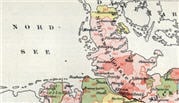Source Information
About Laufen, Germany, Deaths, 1876-1986
About this collection
This collection contains death records from Laufen in Bavaria covering the years 1876 up to and including 1986. It includes records from Heining, Leobendorf and Triebenbach which were incorporated into Laufen between 1969 and 1978. The city is located in the district of Berchtesgadener Land about 9 miles north of Salzburg on the border with Austria. To disambiguate, it is often referred to as Laufen on the Salzach (river) or Laufen in Upper Bavaria. The city's history has been shaped by its location on the river and by the salt trade. This valuable cargo was transported through the treacherous rapids at Laufen and became a rich source of income for the city and its residents. However, the salt trade declined in the 18th century and the construction of railway lines in the mid-19th century put an end to shipping by river. Until 1816, Laufen was part of Salzburg Austria. In 1918 it became part of the Kingdon of Bavaria as an independent city and in 1949 part of the modern German state of Bavaria.
Beginning on January 1, 1876, birth, marriage and death records in the former German Empire were created by local registry offices. The collected records are arranged chronologically and usually bound together in the form of yearbooks. These are collectively referred to as "civil registers." Complementary alphabetical directories of names may also have been created. While churches continued to keep traditional records, the State also mandated that the personal or marital status of the entire population be recorded.
What you can find in the records
Death records were created using preprinted forms that were filled in by hand by the registrar. Beginning in 1956, the forms were completed by typewriter. In each record the date of death usually differs from the date it was registered. Depending on the individual form or on the formulations used by the registrar, you may find:
- Sequential or Certificate Number
- Registration Date
- Informant: Occupation, Given Names, Last Name, Maiden Name, Residence, Address
- Deceased: Occupation, Given Names, Last Name, Maiden Name, Age/Birthdate, Denomination, Residence/Address, Birthplace, Marital Status, Spouse/Parents, Place/Date of Death, Time of Death. Later records may also include a Cause of Death and cross references to corresponding marriage registers.
- Registrars' Signatures
More about using this collection
Each record comprises one page. Additional events from the life of the deceased were sometimes recorded later on in the margins. These notes, sometimes referred to as "narration," can contain very useful information but they have not been indexed. As a result, information from the notes will not found via the search form. The “Informant” was usually a relative of the deceased. In later years death information was often submitted by hospital administrators or funeral directors. War casualties and victims were taken from military records. Those from August 1939 to January 1946 were made available by the "German Office for the Notification of Next-of-Kin of Members of the Former German Armed Forces who were Killed in Action" (WASt) in Berlin. Under "Browse this collection,” select the Civil Registration Office and Year Range for the desired records.
 Need help with the German language? Find resources in our German Research Center.
Need help with the German language? Find resources in our German Research Center.